Stark Photos of the 1986 Philippine Revolution that Took Down a Dictator
The 30-anniversary of revolt that brought us Imelda Marcos’ infamous closet.
Catholic nuns from the Missionary Sisters of the Immaculate Conception help form the first line of defense against Marcos troops on EDSA Boulevard, two miles from the headquarters of anti-Marcos leaders. Religious leaders were a key part of the “People Power” revolt that brought down Marcos on February 24, 1986. (All Photos: © Bancroft Library, University of California, Berkeley/Kim Komenich)
This week marks the 30-year anniversary of the Philippines’ People Power Revolution. Over four momentous days in 1986, a series of demonstrations led to the collapse of the 21-year regime of dictator Ferdinand Marcos. The catalyst was an election some two weeks earlier, where Marcos fraudulently claimed victory against Corazon Aquino, the widow of the assassinated opposition leader Benigno S. Aquino Jr.
The result was that on February 25th, 1986, Aquino was inaugurated as President. On the same day, Marcos and his family fled to Hawaii.
These historic events had not yet occurred when photojournalist Kim Komenich arrived in Manila in 1984. On assignment for the San Francisco Examiner, Komenich photographed the country for the next two years. Over the course of his assignments, Komenich amassed around 1,100 rolls of film, which he developed in hotel bathrooms converted into darkrooms. He was in Manila during these four tumultuous days and documented everything from blockaded streets to Catholic nuns confronting Marcos troops. In 1987, Komenich was awarded the Pulitzer Prize for Spot News Photography.
Komenich’s involvement with the Philippines did not end in the 1980s. Between 2010 and 2015, Komenich retraced his steps. He sought out some of the people he had photographed some 25 years earlier, to see the long-term impact of the revolution. These photographs, plus his original work, make up his new book Revolution Revisited. Together with a documentary film, they tell the story of the first revolution viewed in real time, broadcast across televisions and in newspapers around the world.
Here, a selection of Komenich’s moving photographs and his recollections of a country in upheaval.
Warning: Viewers may find some of these photographs disturbing.

Representatives of tribal groups scale of four-story tall statue of Ferdinand Marcos in La Union Province in a rite to exorcise the former president’s spirit from the statue, March 10, 1986.

A masked protester stands on Roxas Boulevard across from the United States Embassy on September 20, 1984. The protesters were dispersed by riot police after a two-hour standoff.
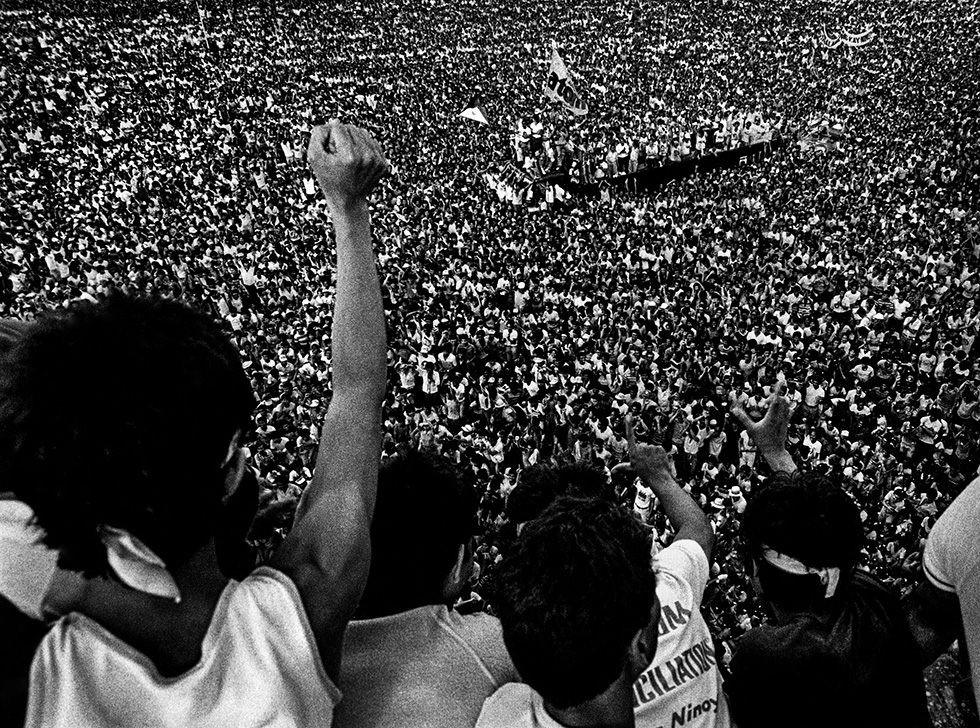
Millions gather at Manila’s Luneta Park on the first anniversary of the assassination of Benigno Aquino on August 21, 1984.
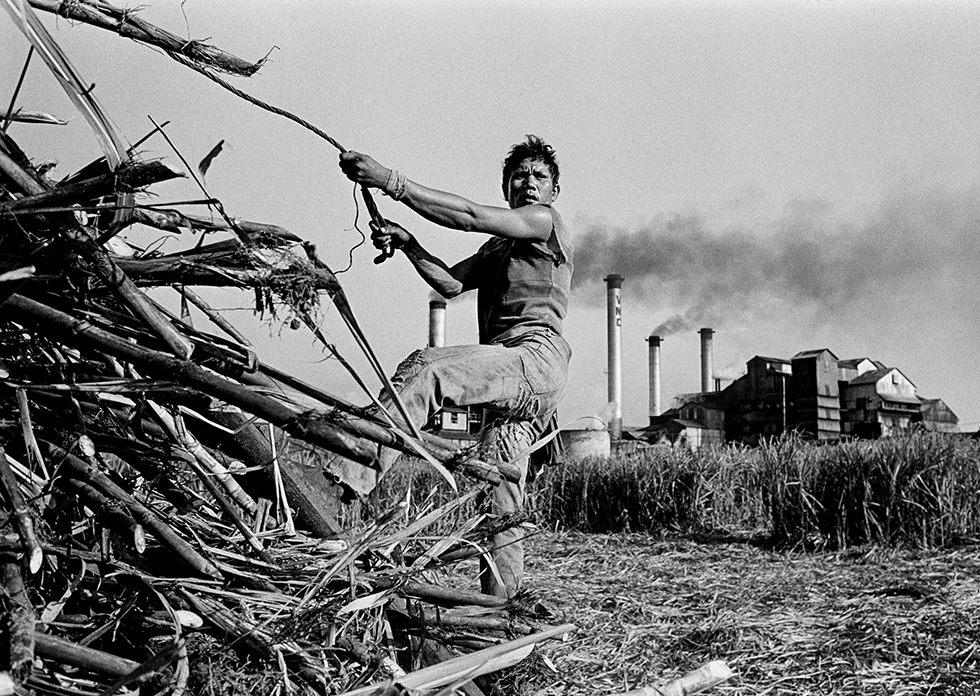
Juanito Pedrosa unloads sugar cane at the Victorias Mill on Negros Occidental in November, 1985. Growers said that the sugar industry and the economy on Negros Occidental were severely impacted by manipulation of sugar prices in the mid 1980’s.

Philippine presidential candidate Corazon Aquino jokes with an aide as her campaign bus tours to the Cavite province in advance of the February 7, 1986 presidential election. This photo was taken on January 28, 1986.

Lenlen Breva, 7, a resident of Makati’s South Cemetery, smashes bottle caps to make toys that she and other children will play with. November, 1985.

As the pro-Aquino military seized the headquarters of the Armed Forces and National Police of the Philippines in Manila, thousands of supporters gathered outside in the human barricade that repeatedly turned Marcos tanks and troops away. These days marked a pivotal time in the history of the media. This photo was taken on February 25, 1986.
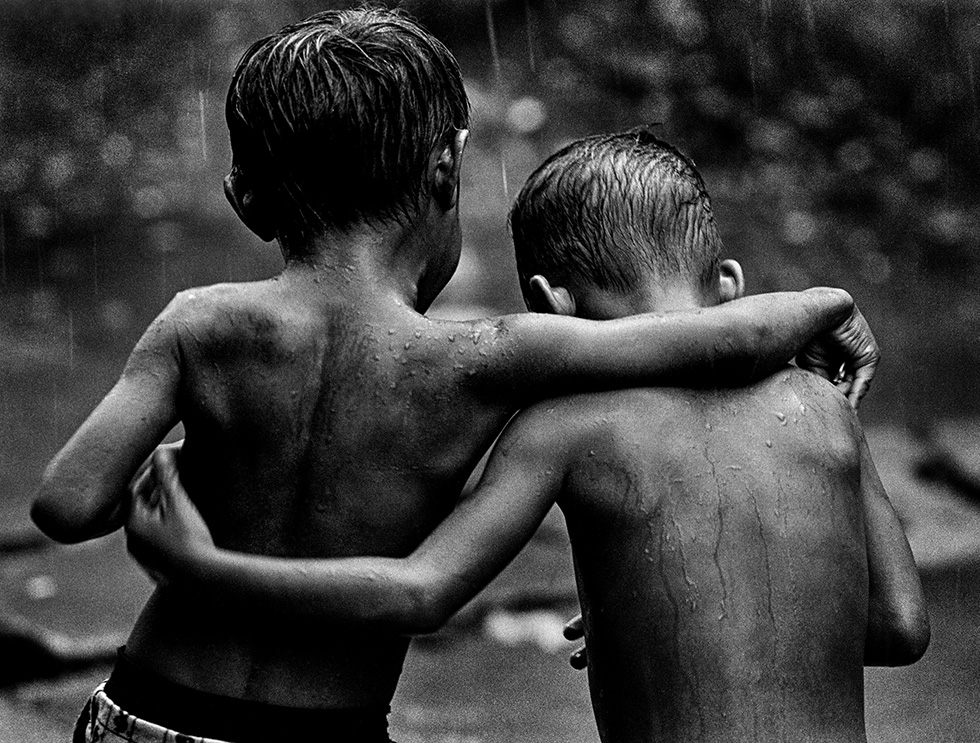
Two boys walk on a Tondo street after a monsoon subsides on September 30, 1984.

Riza Casarmel, 10, spreads fertilizer in the sugar cane field at Hacienda Carmen, near Murcia, Negros Occidental on April 20, 1985.
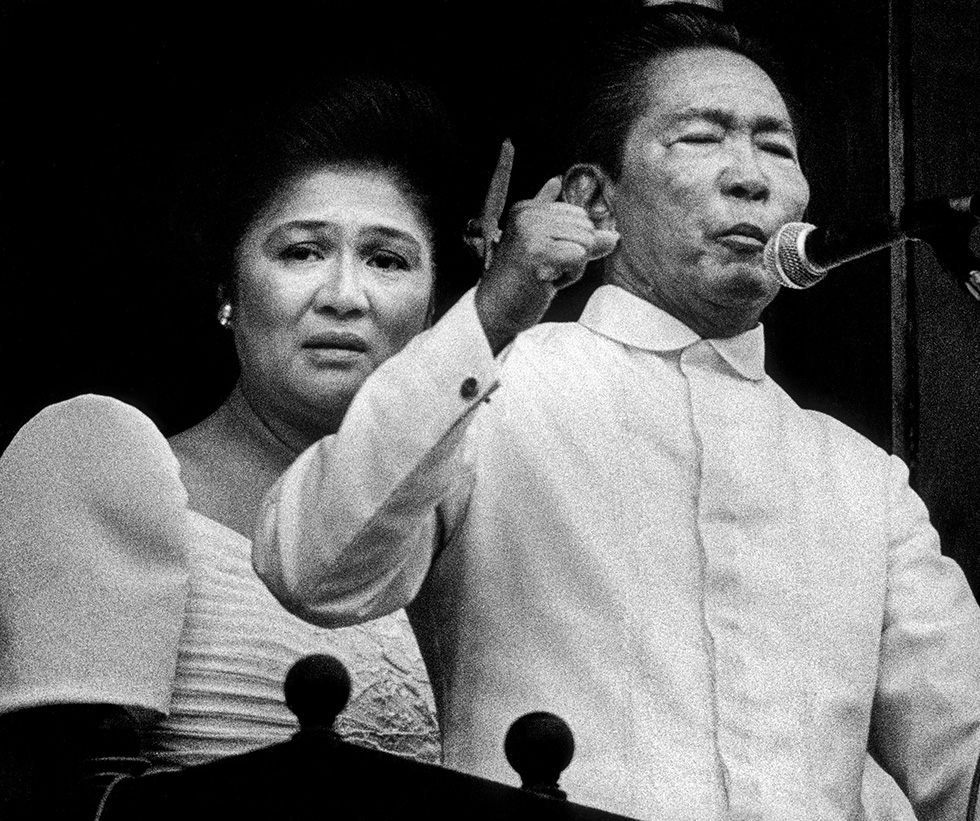
Ferdinand Marcos addresses a crowd of supporters from the balcony of the presidential palace. His wife, Imelda Marcos, is on the verge of tears. A few hours later, they fled the Philippines.
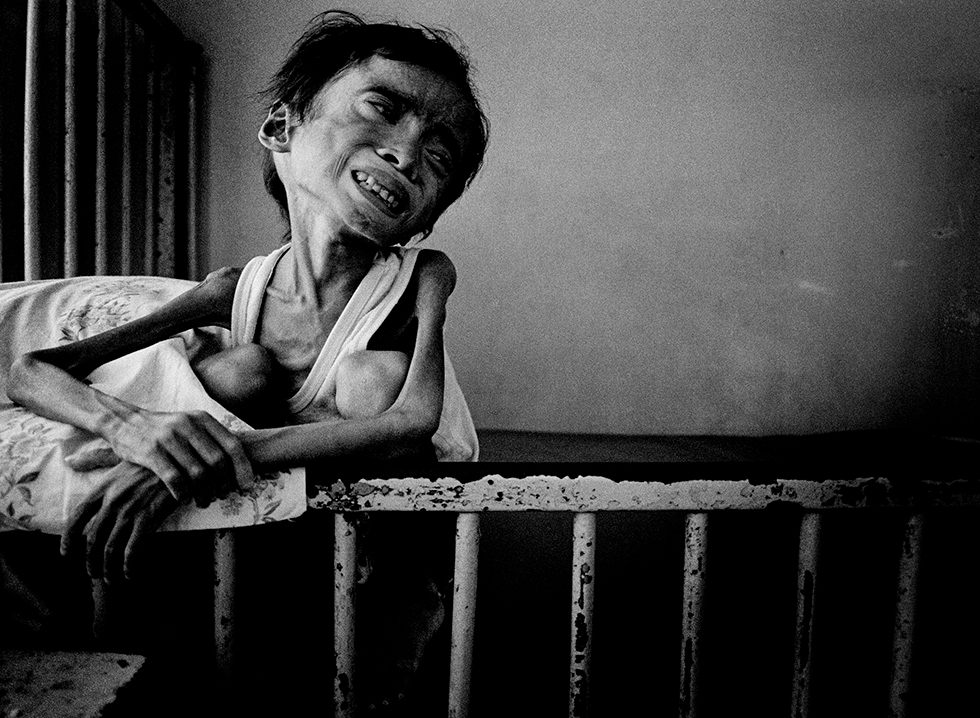
Young malnutrition victim Joel Abong sits in a crib at the Corazon Locsin Montelibano Memorial Regional Hospital in Negros Occidental. Joel was plagued by illnesses through his short life. His condition was not helped when sugar cane prices fell to a near all-time low in the mid-1980’s, causing workers like Joel’s father to lose their jobs. Dozens of children, including Joel Abong, died on Negros Occidental in 1985. This photo was taken on May 4, 1985.

Lenlen Breva stands with her children Jennalene, 9, and Joni, 12, in Manila’s South Cemetery. August, 2010.

Former Philippine First Lady Imelda Marcos stands on the penthouse balcony of her Global City condominium, November, 2010.
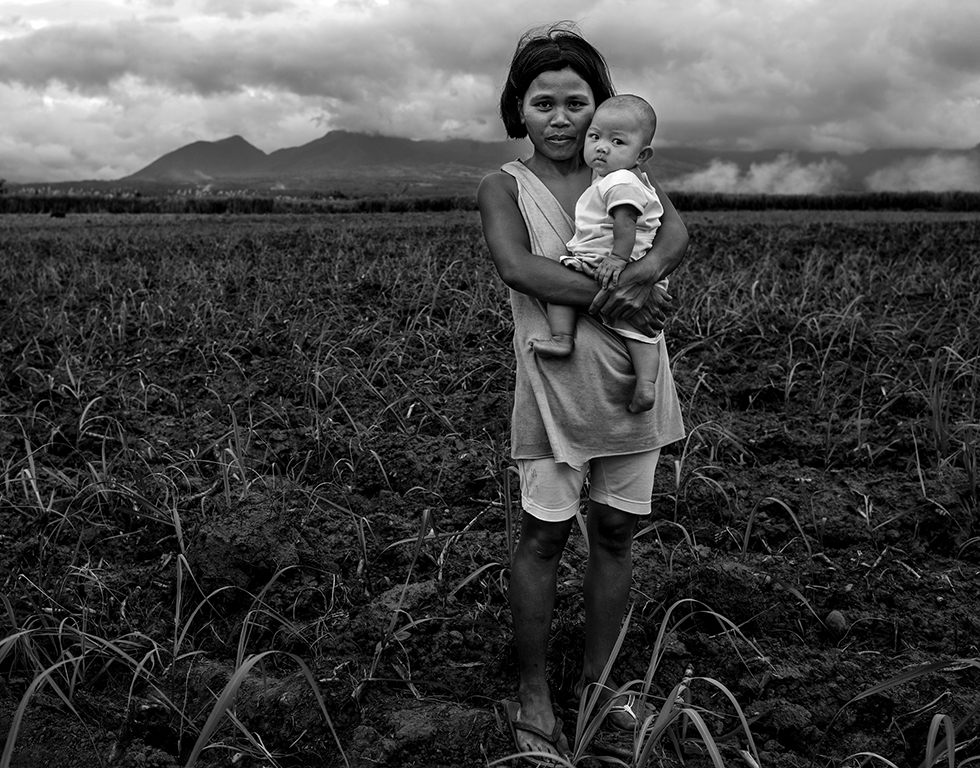
Riza Casarmel holds her daughter Honeylove, one of her nine children, in a sugarcane field on Hacienda Carmen, near Murcia, Negros Occidental, in 2010. Riza is a sakada, an itinerant sugarcane worker. She worked in the fields as a child.








Follow us on Twitter to get the latest on the world's hidden wonders.
Like us on Facebook to get the latest on the world's hidden wonders.
Follow us on Twitter Like us on Facebook